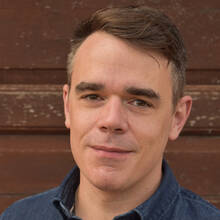I wrote about my experience visiting a medical school anatomy lab a while ago, and I described how viewing human bodies in such intimate detail caused me to consider the spiritual and epistemological dimensions of human life. One Catholic medical school in Chicago also recognizes the spiritual dimension of dissection and reminds students of the sacrifice that once sentient beings offer to further their knowledge. From the Chicago Tribune:
Every year, first-year medical students grapple with gross anatomy, approaching their first human dissection with a mixture of anticipation, anxiety or sheer dread.
On Monday, 150 students at Loyola University Chicago's Stritch School of Medicine approached their task with reverence, reciting prayers and bowing their heads as a Roman Catholic priest offered a blessing over the 18 shrouded cadavers — silent teachers who would guide the aspiring physicians' careers.
"The cadaver keeps speaking to you even in death," said Michael Dauzvardis, director of the anatomy course. "You've got to listen to it. There are volumes of knowledge you can still learn from that person who made that ultimate gift."
During the ceremony, Salvation Army Maj. Debbie Sjogren, of Lombard, stepped up and addressed the students. Her late husband, Salvation Army Maj. Randall Sjogren, was likely under one of those sheets, she said, because he wanted to be one of the next generation's first patients.
"My husband's prayer was: 'I've always wanted my life to bring glory to God. Now I want my death to,'" Debbie Sjogren recounted. "He prayed for every medical student that learns from his body and every patient of theirs that heals from the knowledge they receive.
Read the full article here.







So the study of the human body is a study of the similarities of everyone, which is why one does a dissection knowing that each of us is made the same with the obvious but important differences of male and female. But at the bottom of this, is that the future doctors will then spend their lives exploring the differences between us that causes an individual to see them. Every time I look at a baby at each stage of development I wonder at the majesty of this process. We are all the same and I remark at how kids today play the same games as kids did a 1000 years ago and struggle with the same pressures of freedom versus security as they mature. (before anyone says anthing about the allure of modern electronics which I understand completely, I just witnessed in the last 10 days an 8, 6 and 3 year old amusing themselves by playing make believe in the woods and having more fun than when they were at their IPads.) But each is an individual and different from all their siblings and friends.
Quite a remarkable gift from our creator and the dissection of our descendants helps us to understand the gifts we have been given.
And, in that, we are all the same!
The ceremonial blessing of the shrouded cadavers was most impressive to me
Once I wondered how those cadavers were handled. This piece makes me feel consoled somehow. Thank you for writing it.
Every other year we hold a Cadaver service in the chapel. Physical Therapy, Physician Assistant, and other majors, gather for a candlelight service. We start in the chapel, light our candles and walk over to the cadaver lab for additional prayers.
In addition the students write comments and they are placed in the program literature. Those comments of appreciation are wonderful - very moving.
Thank you for this article